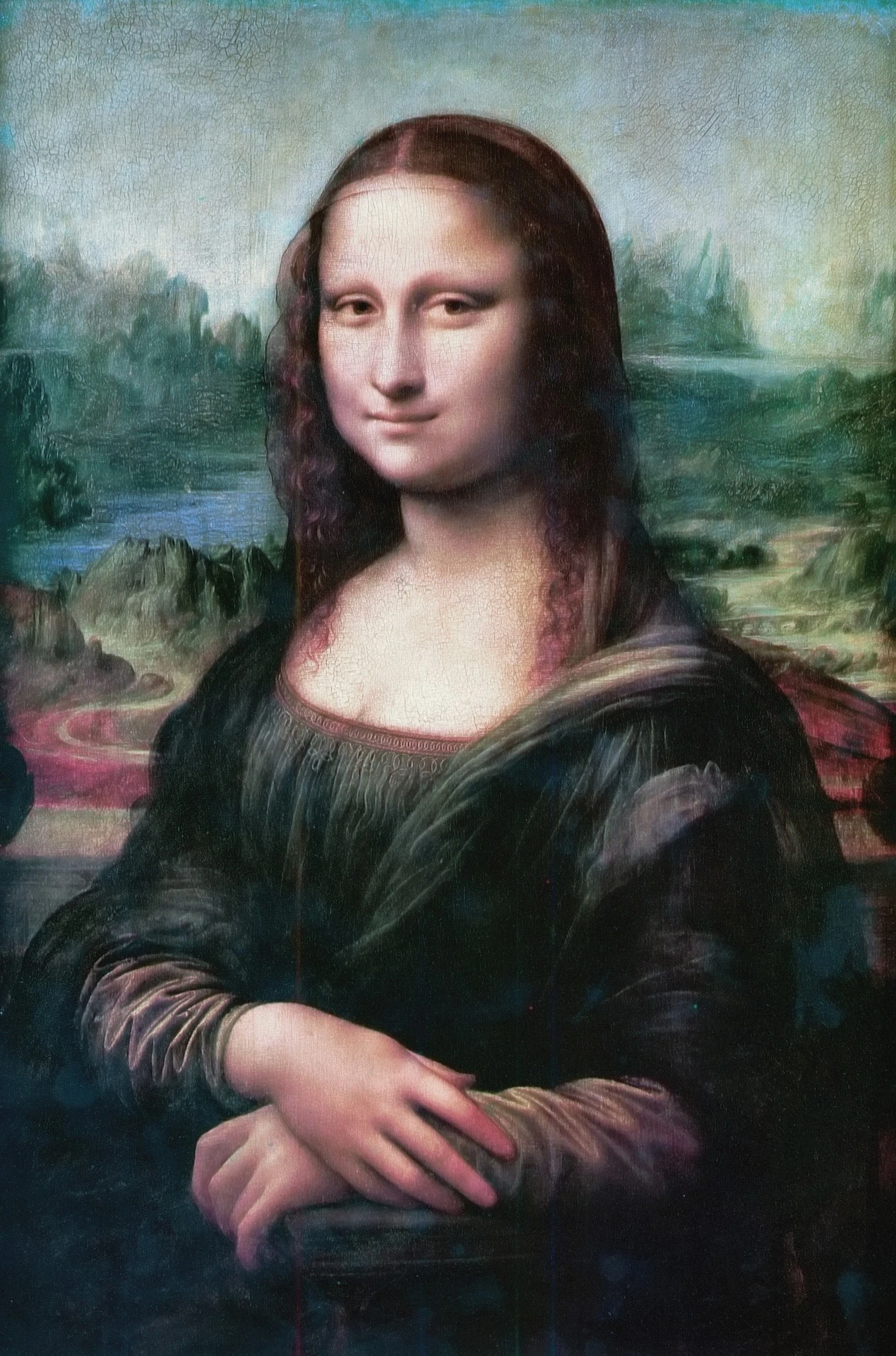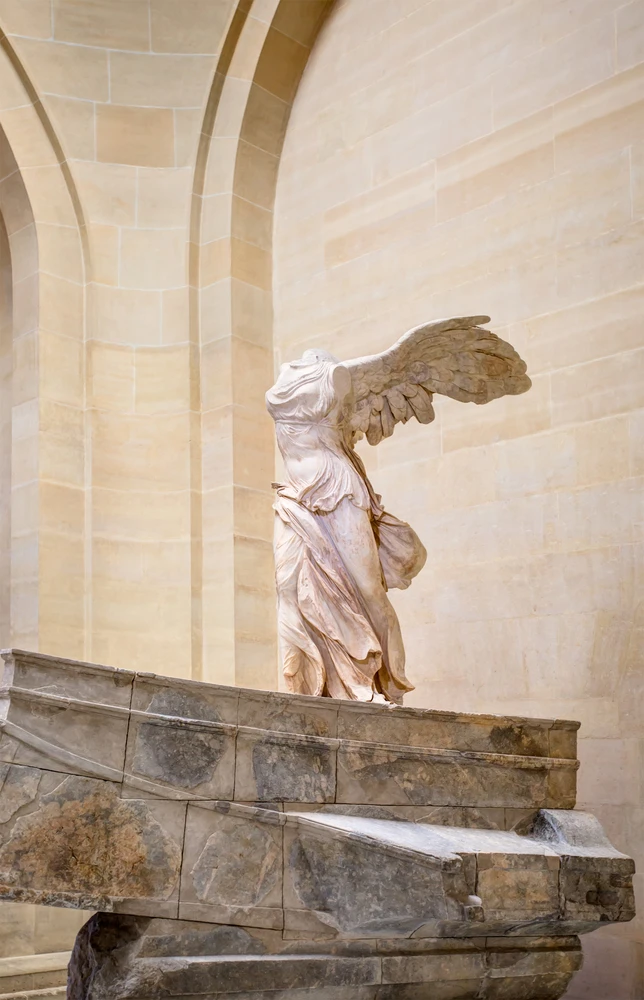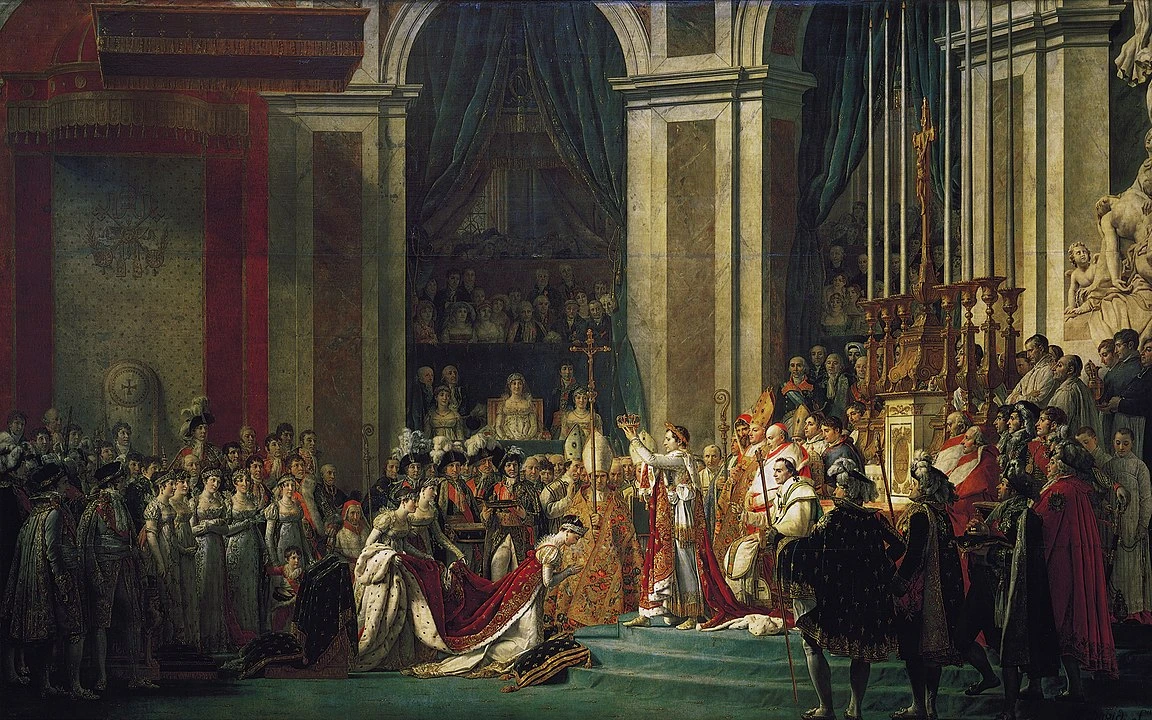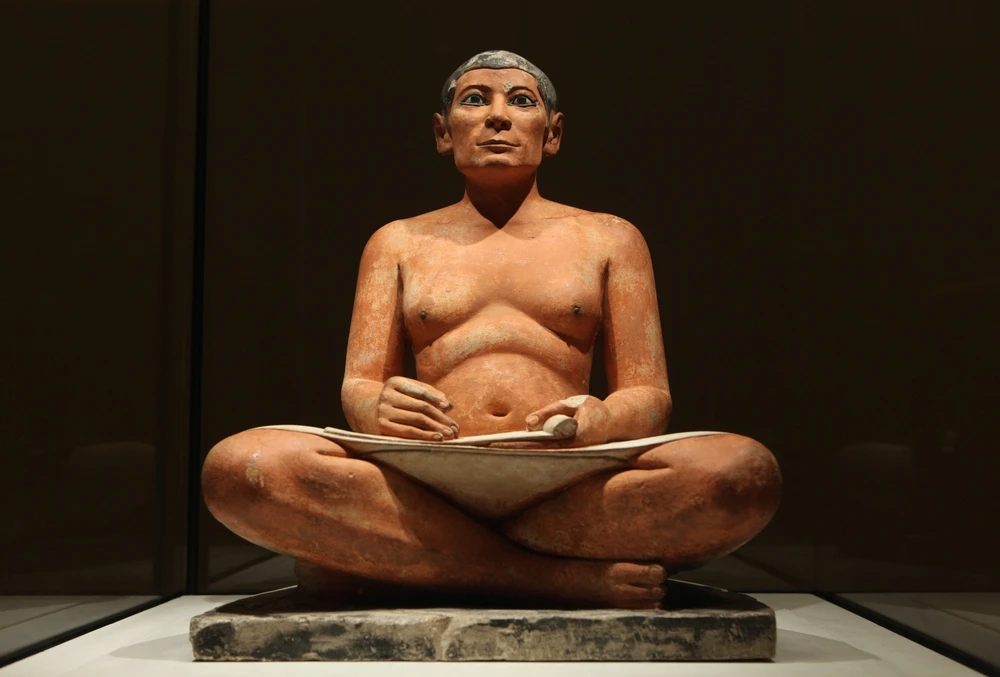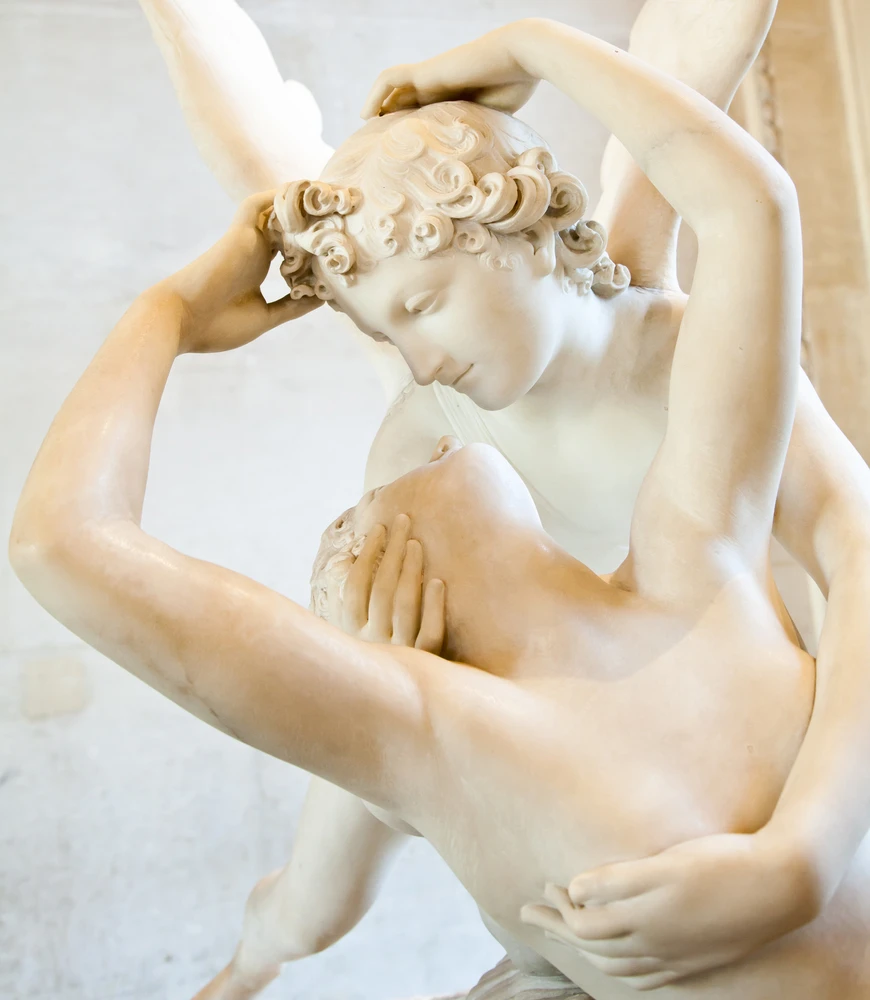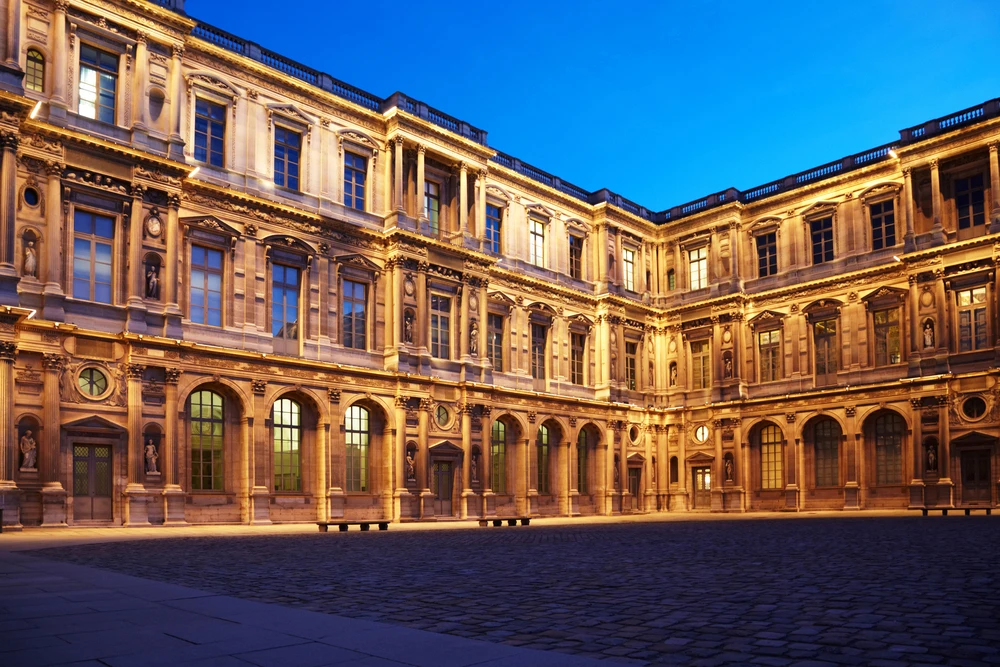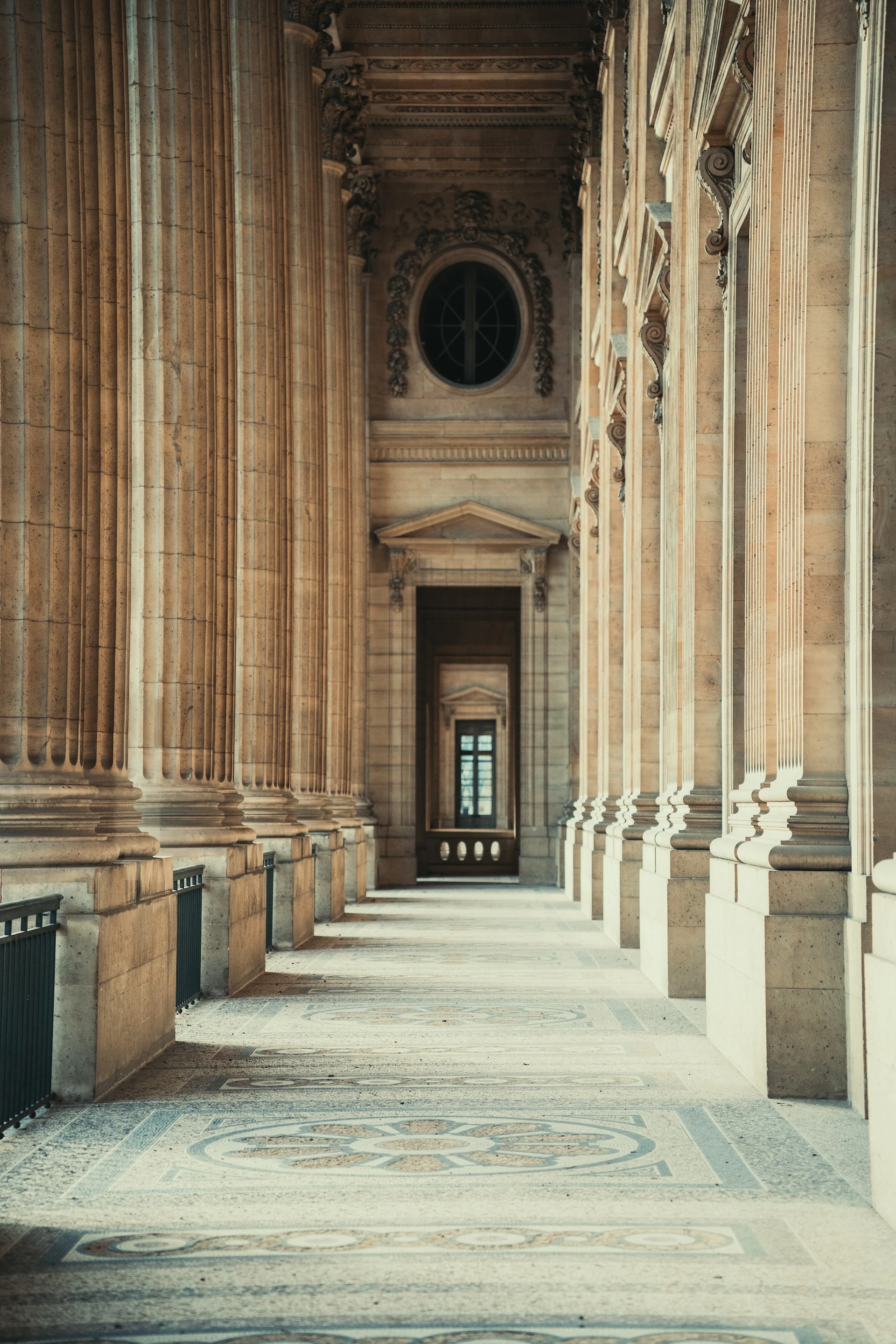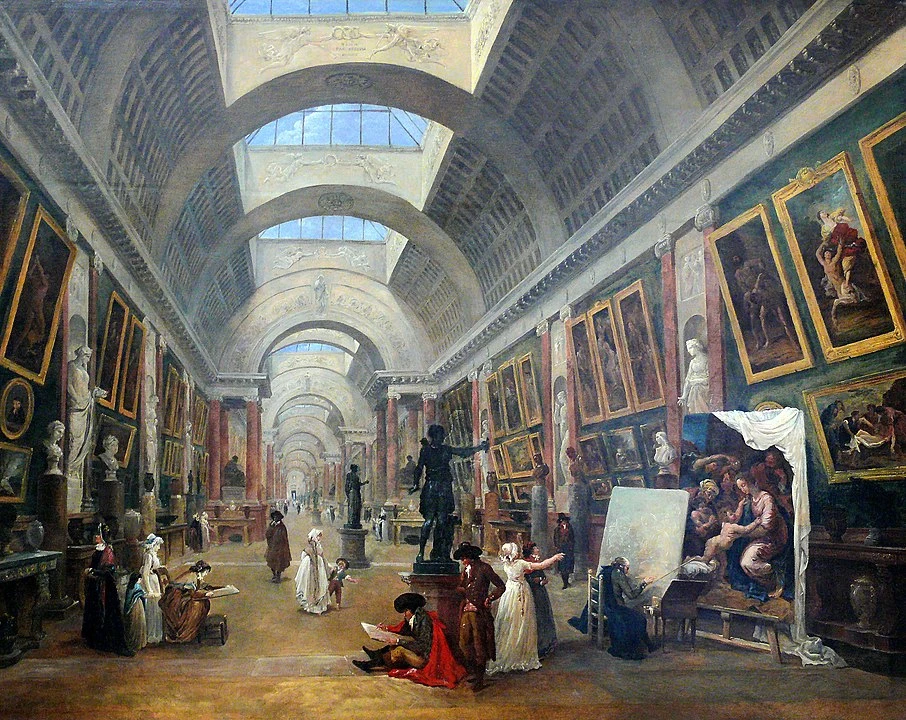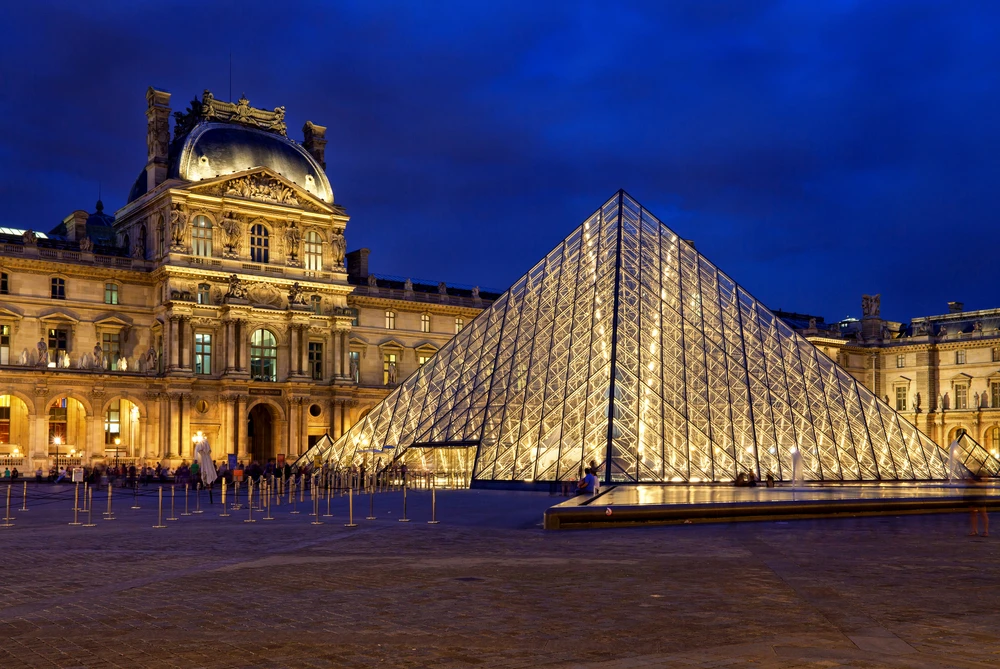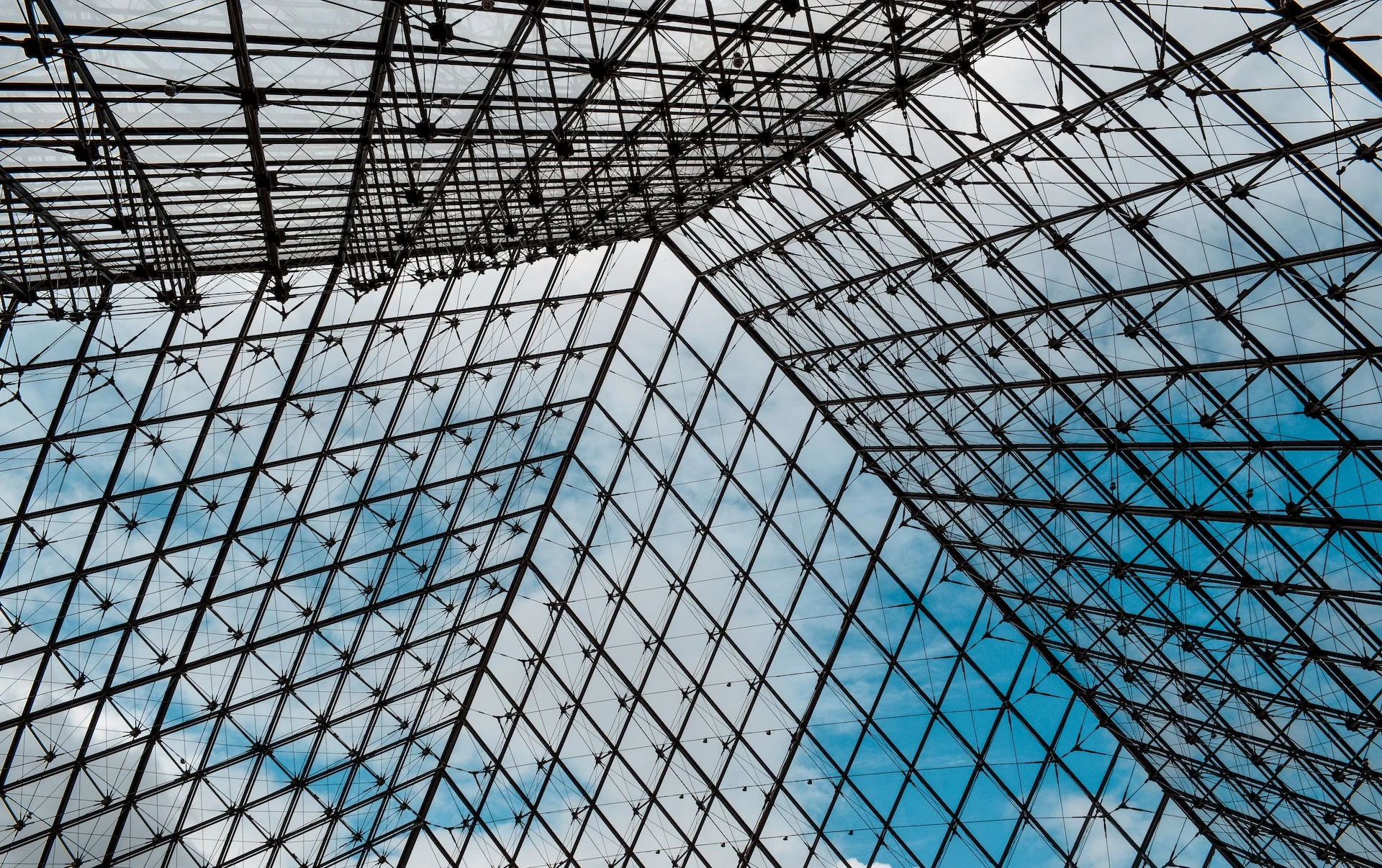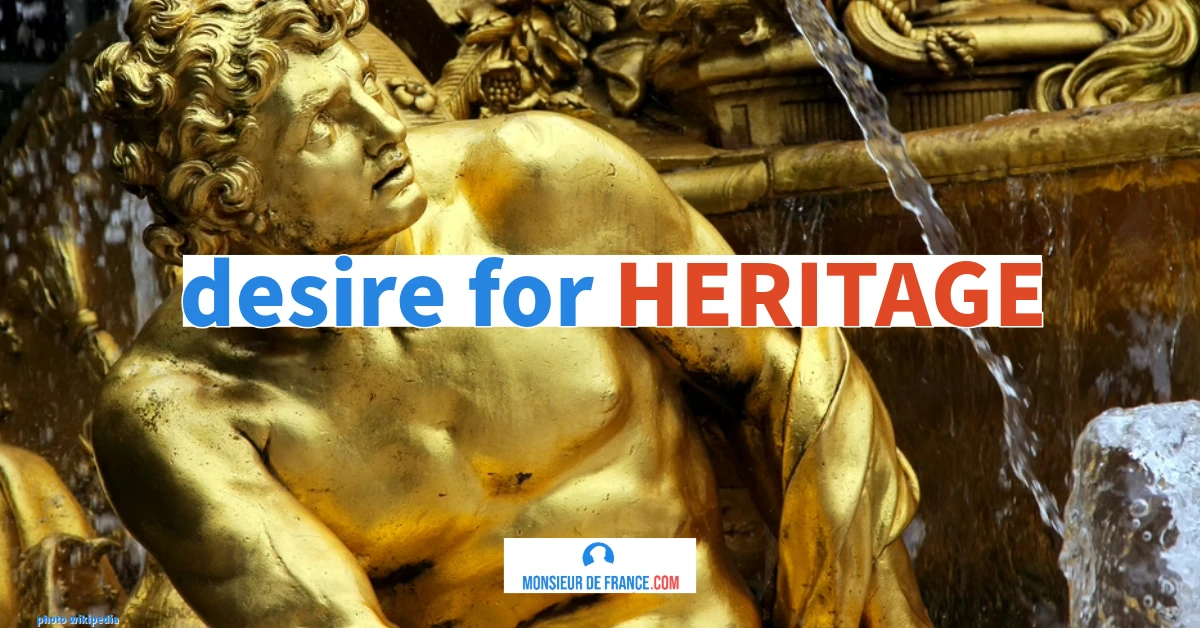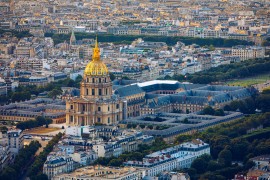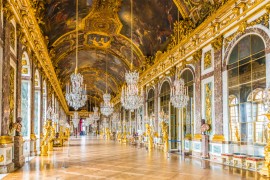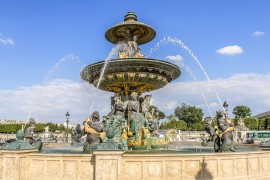The Top 10 works to see at the Louvre
1 The Mona Lisa
Photo par Image par Welcome to All ! ツ de Pixabay
Painted by Leonardo da Vinci in the early 16th century (between 1503 and 1517), it may be a portrait of Lisa Del Giocondo, née Lisa Gherardini, wife of Francesco Del Giocondo, who is believed to have commissioned the painting. Nicknamed Mona Lisa, the woman depicted in the painting is famous for her enigmatic smile. It was stolen on August 21, 1911, before being found in 1912 and returned to the Louvre in 1914. The two world wars provided opportunities for impromptu trips for the Mona Lisa, which was stored in castles far from Paris (Chambord, for example...) and even in private residences, before returning to its place with the Peace. The last time was in 1945.
Location of the Mona Lisa at the Louvre: DENON Wing, Room 711 Salle des États (or Salle de la Joconde).
2 The Venus de Milo
The Venus de Milo / Iphoto Reidl/Shutterstock.com
The Venus de Milo has been on display at the Louvre for just over two centuries (since 1821). "De Milo" because it was found on the Greek island of Milos in April 1820 (and its arms have never been found). It was probably created between 150 and 130 BC.
Location of the Venus de Milo in the Louvre: Ground floor of the Sully wing, room 16, Greek Antiquities Department.
3 The Victory of Samothrace
La Victoire de Samothrace / photo muratart/Shutterstock.fr
Impressive, measuring nearly 3 meters without its base, it is one of the most famous works in the Louvre. It probably dates from the early 2nd century BC. It was discovered on April 18, 1863, by Charles Champoiseau (1830-1909) during excavations on the island of Samothrace, hence its name.
Exhibition location of the Winged Victory of Samothrace at the Louvre: Department of Greek Antiquities, Denon Wing Level 1, Daru Staircase, Room 703.
4 The Raft of the Medusa
"The Raft of the Medusa" by Théodore Géricault (1791-1824), painted in 1818-1819 and exhibited at the Louvre Museum.
This large painting (4.91 m by 7.16 m) was created by the painter Théodore Géricault (1791–1824) between 1818 and 1819. It depicts the painter's vision of the tragic event of the shipwreck of "La Méduse" on July 2, 1816, off the coast of Mauritania. While 147 people boarded "the machine," the nickname given by the builders to the raft constructed to leave the sandbar where the frigate "La Méduse" had run aground, only 15 were rescued by another ship, the "Argus," and only 10 were still alive when they reached land after the shipwreck. "L'Argus," and only 10 were still alive when they reached land after the shipwreck...
Exhibition location of The Raft of the Medusa at the Louvre: DENON wing, Room 700 (level 1) Mollien Room (Romantic paintings department).
5 The Wedding at Cana
The Wedding at Cana (1563) by Paul Veronese (1528-1588). Louvre Museum, Paris.
It is immense: 6.77 m by 9.94 m and features 130 characters. Painted in 1563 by Paul Veronese (1528-1588) for the monks of a Benedictine monastery in Venice, it was taken by France during the Italian campaigns in 1797. Austria demanded that it be returned to Italy after the fall of Napoleon's empire, but the fragility of the painting ultimately convinced them to leave it in the Louvre. An exact copy was installed in 2007 at the monastery of Santo Giorgio Maggiore in Venice, in the exact location of the original.
Location of the exhibition of The Wedding at Cana at the Louvre Museum: DENON Wing, Room 711, Salle des États (or Salle de la Joconde).
6 Michelangelo's slaves
The Dying Slave by Michelangelo (1513-1515) Photo by Jean-Baptiste D. on Unsplash
These two statues (which have just been restored) were created between 1513 and 1515 in Rome by Michelangelo (1475-1564). They were given to King Francis I. There is the rebellious slave and the dying slave.
Location of Michelangelo's slaves at the Louvre Museum: DENON wing, ground floor, room 403.
7 The Coronation of Napoleon
The Coronation of Napoleon "Coronation of Emperor Napoleon I and Empress Josephine in Notre Dame Cathedral, Paris, December 2, 1804" by Jacques-Louis DAVID (1807–1809) Louvre Museum, Paris.
Its full name is "The Coronation of Emperor Napoleon I and Empress Josephine in Notre Dame Cathedral, Paris, on December 2, 1804" and it was painted by December 2, 1804," it was painted by Jacques-Louis DAVID between 1807 and 1809 in memory of the emperor's coronation on December 2, 1804. It measures 6.21 m by 9.70 m. In the painting, we see Napoleon, freshly crowned by Pope Pius VII, who had come to Paris especially for the occasion, preparing to place the empress's crown on the head of his wife, Josephine de Beauharnais, before the court and, in particular, before the emperor's mother, Laetizia Ramolino. As an anecdote, the painter depicted himself in the gallery with his twin daughters. It was the painter David who chose and arranged the colors of the blue, white, and red French flag.
DENON wing, Room 702 Daru Room (paintings department).
8 The crouching scribe:
The crouching scribe from the Louvre Museum (2600 BC) Louvre Museum / Photo by Vladimir Wrangel/Shutterstock.com
Probably created in 2600 BC (making it over 4700 years old!), this scribe is depicted crouching, ready to work, with the papyrus scroll unrolled (only the reed pen is missing). It comes from Saqqara, where it was discovered in 1850 by Auguste Mariette. It has been in the Louvre since 1854. It measures 53.7 cm in height.
Location of the Crouching Scribe at the Louvre Museum: Sully Wing, 1st floor, room 635, Egyptian Antiquities Department.
9 Liberty Leading the People.
Liberty Leading the People / Eugène Delacroix (1830) Louvre Museum, Paris.
This famous painting by Eugène Delacroix (1798-1863) was created in 1830. It measures 2.60 m by 3.25 m and originally depicted the Paris uprising during the "July Days" of 1830. What Delacroix depicts is not liberty guiding the people, but simply (and this is the name the artist gave to the painting) "a scene of barricades." It has become emblematic of the French Republic.
Location of Eugène Delacroix's "Liberty Leading the People" at the Louvre: DENON wing, 1st floor, room 700 (paintings department / Romanticism).
10 Psyche revived by the kiss of Love
Psyche revived by the Kiss of Love at the Louvre / photo Paolo Gallo/Shutterstock.com
This marble work is by Antonio Canova (1757–1822). Created between 1787 and 1793 for John Campbell, this 1.55-meter-tall work is one of the most romantic in the world.
Exhibition locations for Psyche Revived by Cupid's Kiss at the Louvre: DENON wing, room 4, Michelangelo gallery.
The Louvre: history and milestones
The Louvre Fortress in the Middle Ages
Here is a name that evokes beauty, culture, and even mystery. The immense Louvre Museum houses the largest collection of masterpieces in the world. But it is also a distillation of French history. A fortress defending Paris in the Middle Ages, it became the palace of the kings of France over time. Philip Augustus had a fortress built in Paris in 1190 to guard the Seine. It is located in what is now the Cour Carrée (it occupies barely a quarter of the courtyard). It became the location of the treasury with the disappearance of the Order of the Temple, and also became a royal residence with King Charles V, who moved there in 1317.
Philippe Auguste (1165–1223): builder of the Louvre fortress, which was the origin of the Palace and then the Louvre Museum / Battle of Bouvines collections Bibliothèque Nationale de France.
The imposing tower—the keep of the medieval castle—was demolished by François I in 1517, and construction began on what would become the palace of the kings of France until Louis XIV decided to build Versailles. It was on this site, the future Cour Carrée, that construction began on the palace we know today. Every French king since François I has left his mark on it.
The Louvre bears witness to the dark hours of the St. Bartholomew's Day massacre.
Walking across the Cour Carrée, you are following in the footsteps of history. It was here that she roared on August 24, 1572. On that day, the bells of Saint-Germain-l'Auxerrois signaled the massacre of Protestants in Paris during the St. Bartholomew's Day massacre.
A painting that clearly shows what Saint Bartholomew's Day must have been like at the Louvre: One morning in front of the Louvre, oil on canvas by Edouard Debat-Ponsan, 1880, Clermont-Ferrand, Roger-Quillot Art Museum.
A massacre that began here, in the corridors of the Louvre. First, Protestant nobles were hunted down, easily spotted as they were always dressed in black. They were killed, many of them having come to attend the wedding of Henri of Navarre, a Protestant, and Marguerite de Valois, a Catholic. A terrible night that spreads throughout Paris and all of France, forever tarnishing the name of King Charles IX, who decided on the massacre, and his mother, Catherine de Medici, who did everything she could to convince him.
The Louvre, royal residence of Henry IV, Louis XIII, and Louis XIV
After that fateful day, other kings ruled France from their palace at the Louvre. Henri III and Henri IV wanted to connect the Louvre to the Tuileries Palace, built by Catherine de Medici, which was done in the 17th century until the Tuileries was destroyed during the Paris Commune in 1871. Louis XIII began work on the Cour Carrée, which remains the Louvre's masterpiece.
Square courtyard of the Louvre Pavel L Photo and Video/Shutterstock.com
In 1682, Louis XIV abandoned the palace of his ancestors for the marvel he had built for himself at Versailles. This did not prevent him from constructing the famous colonnade that gives the Louvre such grandeur on the outside, facing Paris. Paris was a city that the Sun King feared and even hated, having witnessed as a child the people of Paris storming the palace to ensure that the royal family had not fled. The young Louis had to pretend to be asleep in his bed while the women of Paris passed by to check that he was still there.
The Colonnade of the Louvre, designed by Charles Perrault, Le Brun, and Le Vau (built between 1667 and 1670) / Photo by Anna Hunko on Unsplash
A place of culture since the 18th century
Little by little, the Palace of Kings became the Palace of Artists. In the 17th century, part of the French kings' collections were already on display, even though the Mona Lisa, for example, was housed in Versailles and would not arrive at the Louvre until more than 100 years later. The Louvre was the headquarters of the Royal Academy of Painting and Sculpture. It was only natural that the Louvre became a sanctuary for the arts. However, part of the palace was a kind of huge shopping mall. Similarly, some parts remained private and became offices in the 19th century, notably the headquarters of the Ministry of Finance until 1981.
The Louvre: a museum since 1793
A project to develop the Grande Galerie du Louvre in 1796
The French Revolution officially turned it into a museum in 1793. At the time, it housed 660 works. The 19th century made it THE French museum. The collections were considerably expanded. Over the years, additions were made from French discoveries during colonization. The Egyptian collection, in particular, became very important. It was also at the Louvre Museum that the remains of the Crown Jewels (stolen in 1792, but largely recovered) were installed.
The Louvre today: the largest museum in the world
It is now the largest museum in the world. More than 7,000,000 visitors each year explore its 72,735 m² of floor space, entering through the glass Great Pyramid designed by Leo Ming Pei and inaugurated by François Mitterrand on March 4, 1988. 673 glass panels, 85 tons, 35 meters wide and almost 22 meters high. Highly controversial at the time of its construction, it has become one of the stars of the Louvre alongside the Mona Lisa and the Venus de Milo.
Pyramide du louvre photo par Pavel L Photo and Video/Shutterstock.fr
Practical information about the Louvre: opening hours, admission fees, access, and tips
Ready to visit the Louvre? Let's go! Photo by Myriam Olmand on Unsplash.
3 tips for getting the most out of the Louvre
1. Book your ticket online and arrive early.
The Louvre attracts more than 7 million visitors a year: don't waste an hour under the Pyramid. Buy your tickets on the official website, choose a morning slot (before 10 a.m.) and enter via the Richelieu passage if you already have a ticket. You'll save precious time.
2. Start with the masterpieces, then explore at your own pace.
The Mona Lisa, the Winged Victory of Samothrace, and the Venus de Milo are must-sees, but they attract crowds. Start with them as soon as the museum opens, then discover the lesser-known treasures: the Khorsabad courtyard, medieval sculpture, and Flemish paintings. You'll see another side of the Louvre, one that is calmer and more intimate.
3. Enjoy Friday evening openings.
The museum closes at 9:45 PM on Fridays: a magical, more peaceful experience, with soft lighting in the galleries and fewer visitors. It's also the best time to photograph the illuminated Pyramid from the Cour Napoléon—an unforgettable memory.
💡 Photographer's tip:
Avoid peak hours (11 a.m. to 3 p.m.). Arrive at opening time (9 a.m.) or come back around 6 p.m., when the low light enhances the facades and the reflections in the pools are at their calmest. And no need for a professional camera: a smartphone with good framing at the right moment will work wonders.
Getting to the Louvre:
There are several entrances. The main entrance is through the Louvre Pyramid. You can also access the museum via the Carrousel at 99 Rue de Rivoli or via the Passage Richelieu, also on Rue de Rivoli. If you are on foot, the easiest way is to enter 99 Rue de Rivoli into your GPS.
By Metro:
Lines 1 and 7 : "Palais Royal / Musée du Louvre" station (which is quite pretty, by the way).
Line 14: "Pyramides" station.
En Bus :
Lines No. 21, 27, 39, 67, 68, 69, 72, 74, 85, 95 (let's play the lottery!)
By car:
There is a parking lot located at 1 Avenue du Général Lemonnier. It is open from 7 a.m. to 11 p.m., and visitors enter the museum through the Caroussel gallery.
For people with reduced mobility
Access is provided for people with reduced mobility. It is also possible to borrow a wheelchair.
With family
The museum is accessible to everyone, including families. You may be pleased to know that you can explore the Louvre with a stroller.
Luggage
Please note that oversized luggage may be refused, but there are lockers available.
The Louvre Pyramid is the main entrance to the Louvre Museum / interior view Photo by Myriam Olmand on Unsplash
Finding your way around the Louvre:
There is a very well-designed interactive map that you can find here.
It is also possible to follow different routes which you will find here (at the bottom of the page).
TIP: Finally, don't deny yourself the pleasure of a "pre-visit" to the Louvre with the 3D tour available here.
Louvre admission fees for 2025:
The base rate is €22 (2025 rates and indicative. Check on the website).
It is free for those under 18 and also free for those under 26 residing in a European Union member country.
TIP: We strongly recommend that you purchase your tickets online to avoid long waits at the entrance. It couldn't be easier—just go here and you'll save a lot of time.
Every day, nearly 20,000 people pass in front of the Mona Lisa / Photo by Calvin Craig on Unsplash
Louvre opening hours:
The Louvre Museum is closed on TUESDAYS.
Some collections may also be closed temporarily for research or maintenance. Click here to find out more.
The usual hours are:
Monday / Wednesday / Thursday / Saturday / Sunday: 9:00 a.m. to 6:00 p.m.
Friday: 9:00 a.m. to 9:45 p.m.
The last admission is one hour before closing time, and evacuation begins 30 minutes before closing time.
TIP: Avoid weekends and Wednesday afternoons. Go in the morning as soon as it opens. Don't overlook Friday night , which is quite charming. It's much less crowded after 6:00 p.m. on that day.
PLEASE NOTE: All our information is current as of December 16, 2022. It may have changed since then. The website publisher is not responsible for any information provided here. To verify, always visit the official website of a monument before you go (and be wary of the first results that appear after searching, as they may be sponsored links or paid services that are more expensive than the monument's own services).
Do you love Paris? Discover all our Parisian destinations here!
FAQ – Visiting the Louvre
How long does it take to visit the Louvre?
It all depends on your pace. For a first visit to see the must-see exhibits such as the Mona Lisa, the Venus de Milo, and the Winged Victory of Samothrace, allow two to three hours, preferably in the Denon wing. To explore the galleries and the Sully or Richelieu wings in more depth, allow a full half-day.
When is the best time to visit the Louvre?
The museum is often very busy. Weekday mornings are the quietest, especially Mondays and Thursdays. Friday evenings, during late night opening until 9:45 PM, offer a more intimate atmosphere, ideal for enjoying the masterpieces without the crowds.
Can tickets be purchased on site?
Yes, but it is strongly recommended to book online on the official Louvre website to avoid long lines under the Pyramid. The digital skip-the-line ticket is valid for a specific time slot and allows direct entry.
Where is the Mona Lisa located in the museum?
Leonardo da Vinci's famous painting is on display in the Denon wing, room 711, also known as the Salle des États. Follow the signs for "La Joconde" from the main entrance: it is the museum's most visited work.
Is the Louvre free for certain visitors?
Yes: admission is free for visitors under the age of 18 and for European Union residents under the age of 26. Admission is also free for everyone on the first Saturday of the month from 6 p.m. and on July 14 (Bastille Day).
When is the Louvre closed?
The museum is closed on Tuesdays. It is open the rest of the week from 9 a.m. to 6 p.m., except on Fridays when it stays open until 9:45 p.m. Please note: some rooms may be temporarily closed for restoration or renovation work.
Can you take photos in the Louvre?
Yes, photography without flash is permitted in most areas. However, tripods, monopods, and selfie sticks are prohibited. Professional photography requires prior authorization.
Which entrance should you choose to avoid the queue?
The Pyramid remains the main entrance, but those in a hurry can use the Carrousel du Louvre (99 Rue de Rivoli) or the Passage Richelieu, which are quicker on busy days.
How much will it cost to enter the Louvre in 2025?
The general admission price is €22. A combined ticket with the Eugène Delacroix Museum is also available. Always check the updated prices on the official website before your visit: some temporary exhibitions have an additional fee.
What to do around the Louvre after your visit?
The neighborhood is full of treasures: the Tuileries Gardens, the Palais Royal, the Seine, and the Pont des Arts are all within walking distance. For a gourmet break, explore the nearby rue Saint-Honoré or the arcades of the Comédie-Française

